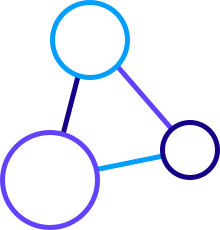Upcoming Open Mic - (Re)using EU controlled vocabularies to enrich Semantic Government Vocabulary
The Open mic session starts on Friday 28th April 2023 at this link. The speaker Michal Med analyses Controlled vocabularies and models provided and published by the Publication Office of the European Union in the context of enrichment or domain anchoring of Semantic Government Vocabulary (SGoV).
The abstract
EU distinguishes among Controlled vocabularies and Models, while Controlled vocabularies are defined as “Controlled vocabularies provide a consistent way to describe data. They are standardized and organized arrangements of words and phrases presented as alphabetical lists of terms or as thesauri and taxonomies with a hierarchical structure of broader and narrower terms.”
Controlled vocabularies
Contains five types of vocabularies:
- Authority tables – used to harmonise and standardise the codes and associated labels used in various environments and in facilitating data exchanges between the institutions,
- Thesauri – controlled and structured vocabulary with concepts represented by labels with a hierarchical structure of broader and narrower terms (multilingual),
- ATTO tables – internal application of PO that regroups translations in different languages, public available ONLY metadata related tables used by EUR-Lex,
- Alignments – given concept from one vocabulary may have a level of correspondence with a concept in different vocabulary,
- Taxonomies – set of controlled vocabulary terms organized in hierarchical structure, referred as a tree. Non preferred labels and synonyms are not allowed.

Models
Models contain of four types of vocabularies:
- Schemas – XML schemas, a machine readable representation of a data set,
- Ontologies – formal specification designed to delimit and group instances/concepts based on their common class and thus formalizing a domain,
- Presentation style sheets – style sheets are meant for transformation of controlled vocabularies in the human readable (document) form. EU Publications Office uses CSS files for this,
- Application profiles – describe how to apply standards in particular domains or applications.

Ontologies and semantic web related vocabularies
This open mic session focuses on the potential (re)usage of controlled vocabularies and models in order to be used for enrichment or domain anchoring of Semantic government vocabulary (SGoV) within the European data and knowledge environment. In the session we focus on Thesauri, taxonomies, ontologies and particular application profiles provided and published by the Publication Office of the European Union.
Further reading:
